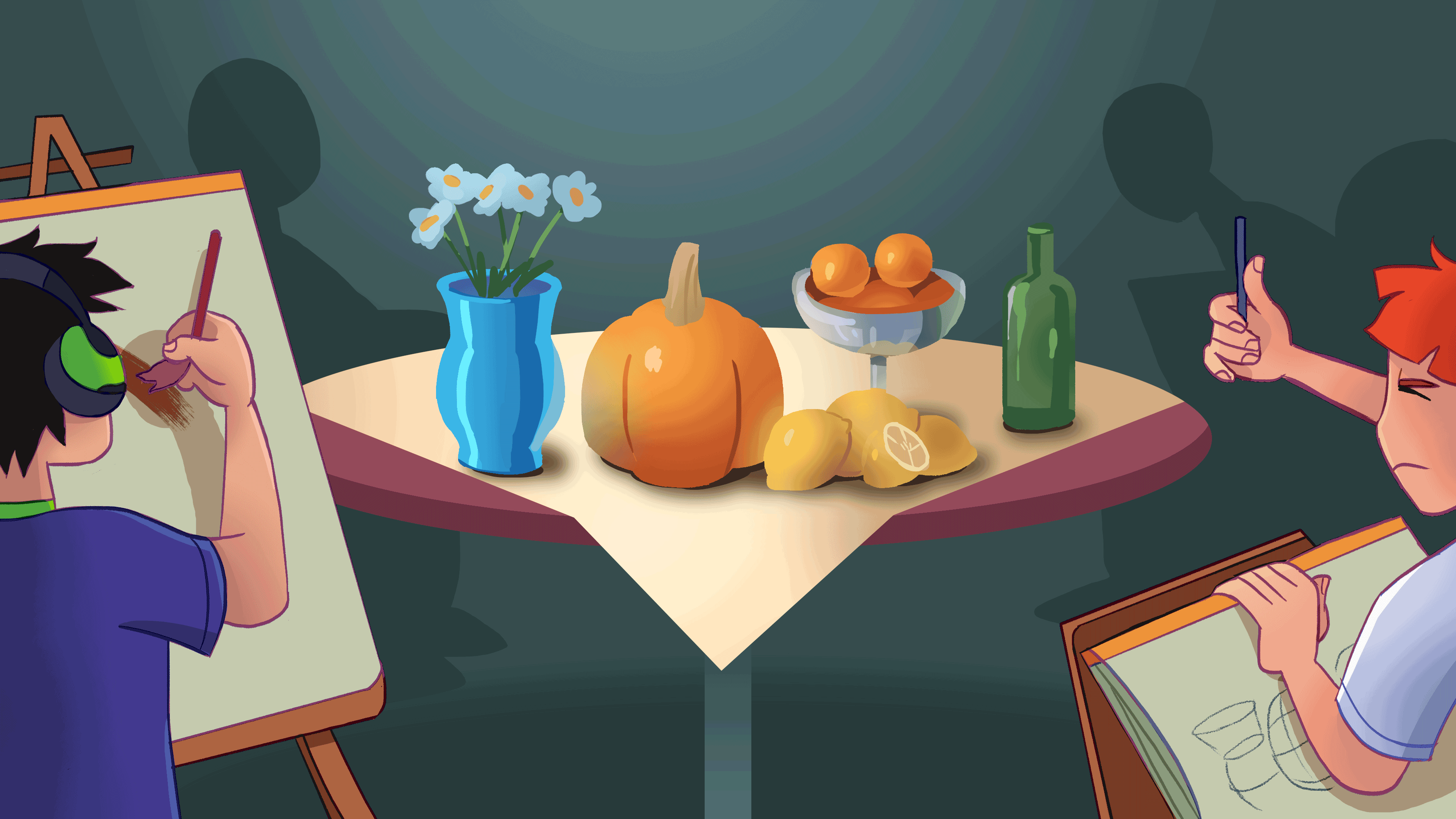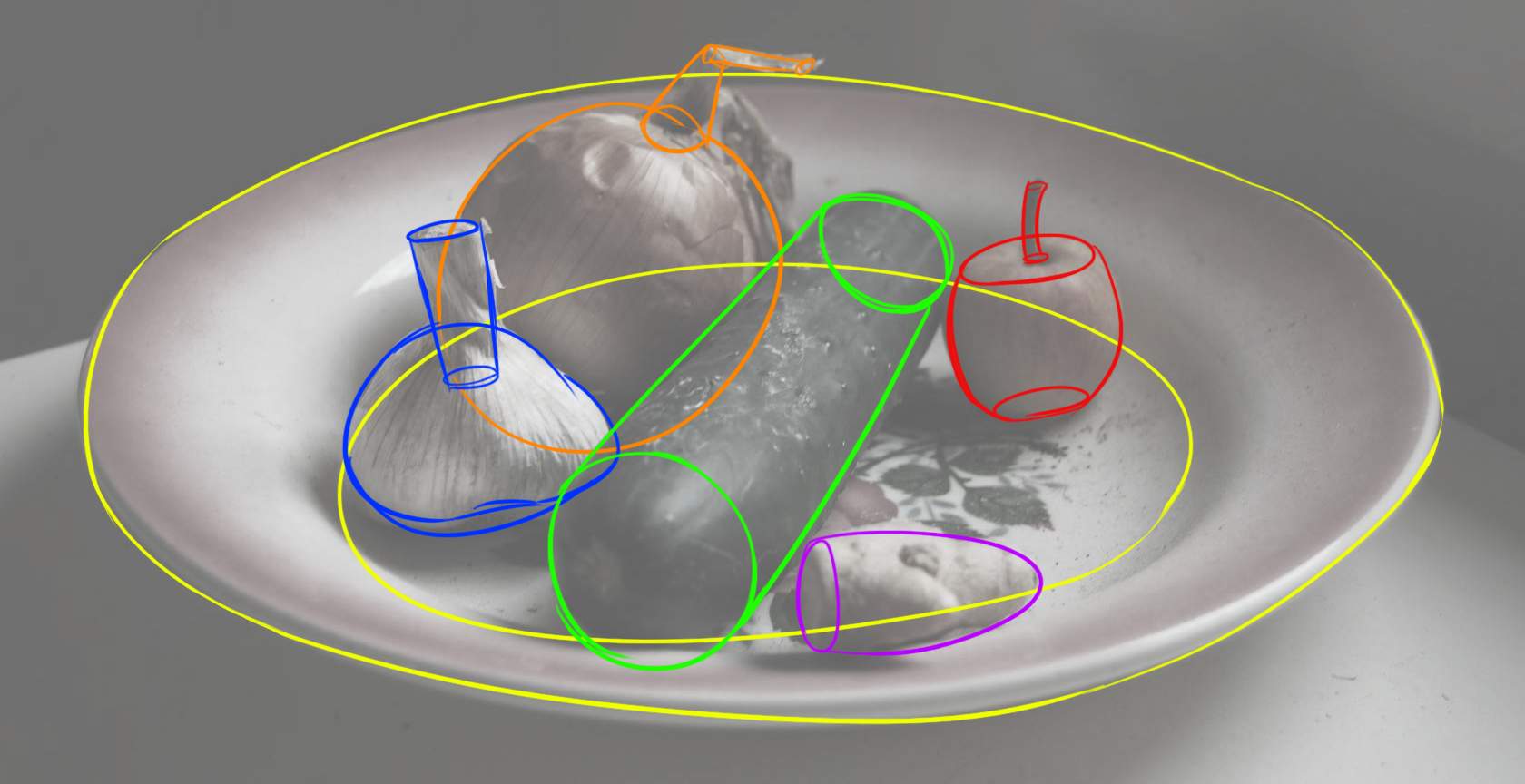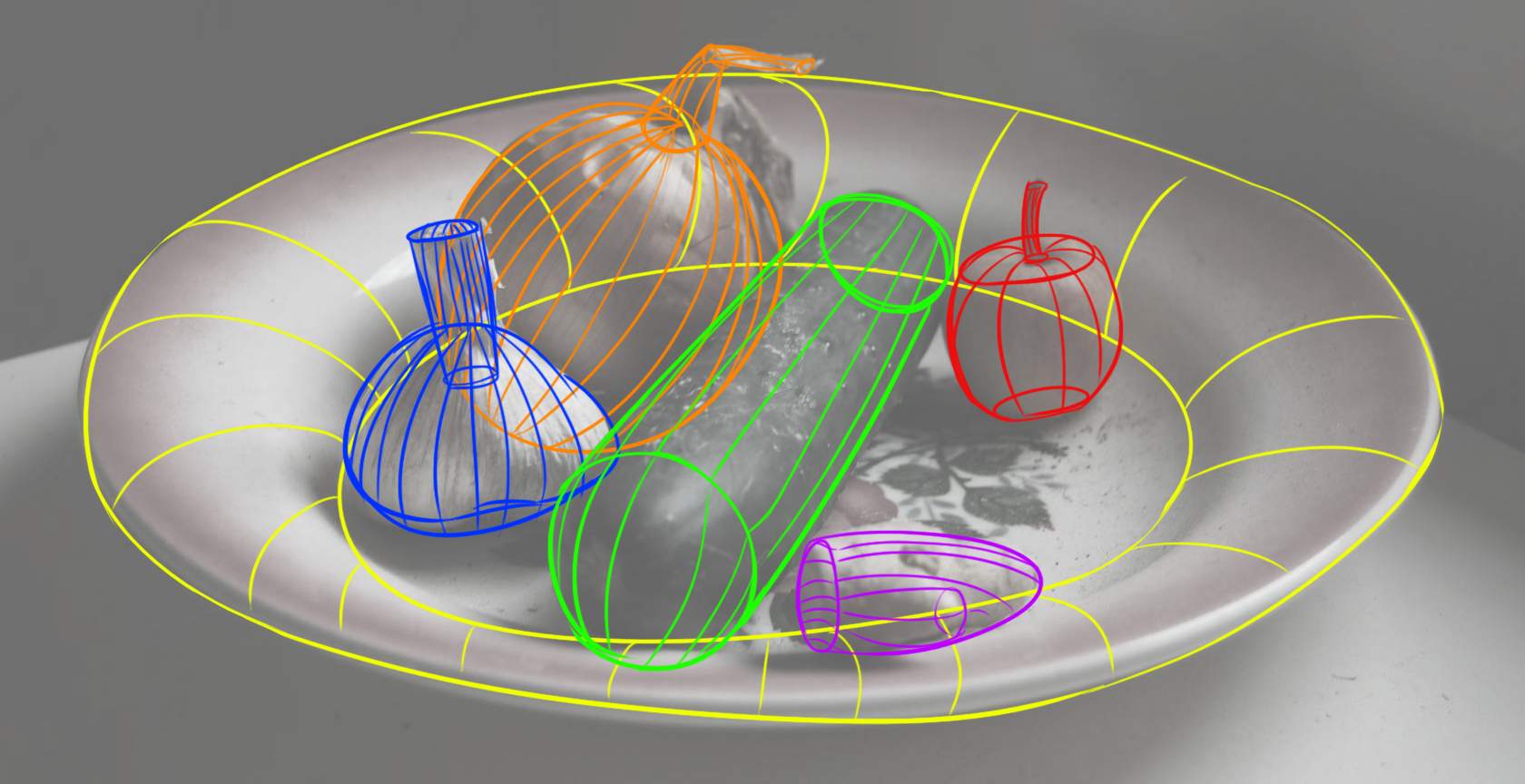When learning to draw and create art, the best source of inspiration and reference is all around you: real life!
That's why you see artists with their sketchbooks out in public, at the park, etc.—to draw from the people, places, and things that make up this vast and different world.
How Artists Practice Drawing from Reference
Specifically, these are some of the common life drawings that artists use to practice and hone their skills.
Still Life
Many new artists will set up and draw objects to practice getting forms on paper. These are called still life drawing, and this is a common process to help them learn basics like shading, how to draw one object in front of another, and more.
Figure Drawing
When drawing a model, such as a person or an animal, that's a figure drawing. This can take a set amount of time to practice looking at forms and working on proportions—which make the figure look accurate. In animation studios like Disney, artists will participate in daily figure drawing sessions to sharpen their skills of drawing people or animals, depending on the model.
Café Sketch
The term café sketch originates from artists hanging out in a café and drawing people that walk in and out. Since cafés and coffee shops have tons of people coming in and out quickly, it provides for a variety of people to draw.
How to Practice at Home
The good news is, new artists can also simulate these practice forms at home by drawing family members or pets, or even looking out the window to draw neighbors passing by!
When there isn't access to models who can sit down to be drawn for extended time periods, this is a common practice to help build skills, and a way to draw from life.

As touched on above, a huge part of becoming an artist is constantly practicing and drawing every day. Because artists don't always have places they can go to draw from life, it's important to learn how to draw from reference images that can be found at home or even online.
Here is a quick exercise most anyone can get started with right now if they wanted:
1. Get out a piece of paper, or a sketchbook.
2. Using a pencil, draw whatever's sitting on your desk or table.
3. Once you've drawn the image, share your drawing with a friend or family member.
As a tip, make sure that your young artist starts with simple shapes! A keychain or a cup will be much easier to begin with rather than something complicated like a bookcase or sculpture.
What does this mean—shapes?
1. A drawing can be broken down into basic shapes like ovals and circles.

By breaking this image above into basic ovals and circles, artists can get a better idea of how to draw this still life. Notice that the shapes aren't perfect, and that's fine—everything in life will have bumps and extra details that don't make a perfect circle or oval.
Right now, these shapes might seem kind of flat.
2. Add more depth and make your shapes three-dimensional to take them even further.

Notice how the shapes above are clearly three-dimensional, and more detailed. For example, the top and bottom of the cucumber are detailed with smaller circles, creating more of a cylinder shape. The shapes have been colored differently to represent overlap between them.
3. To feel the weight and make these objects even more three-dimensional, you can add lines to represent the direction:

See how the lines follow the curves of the shapes? It's easier to tell how the weight is distributed. For example, all of the lines meet at the top stem of the apple, since the weight is distributed inward.
Next Steps
Now that your young artist has drawn some basic objects, you can start sketching people through figure drawing. Just like we started with a reference image for the first still life, you can do the same with a figure drawing.
When visualizing shapes for human beings, think about shapes, just like we did with the vegetables. These shapes might be more box-like and less oval. Humans are more complex than cucumbers, and you might find more variety in the shapes you see.
For more details, stay tuned for our next post and tutorial, or get your child started now with an Online Private Lesson in Drawing Fundamentals.
